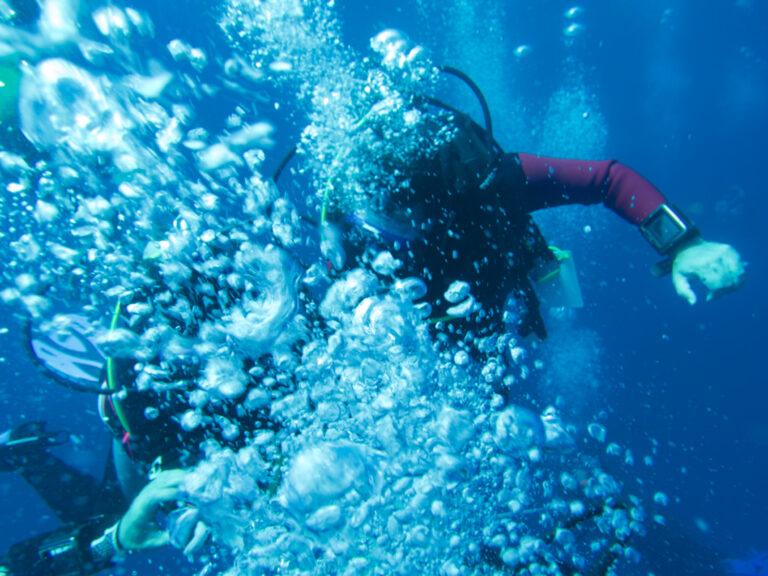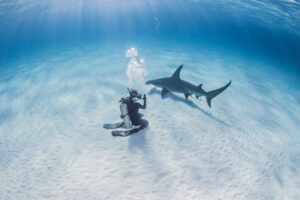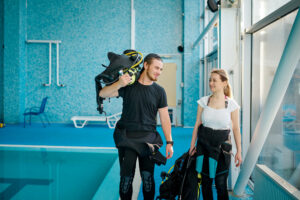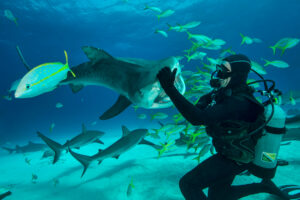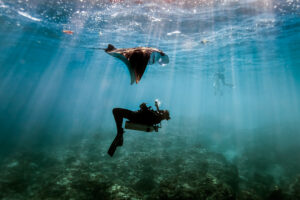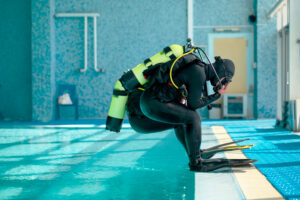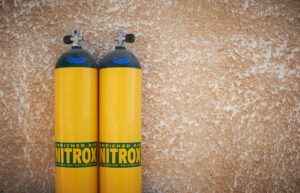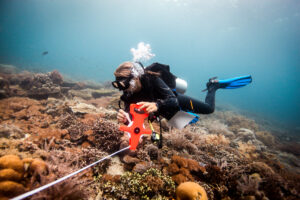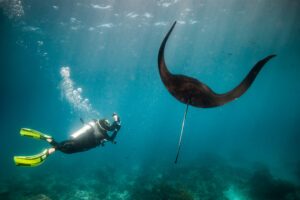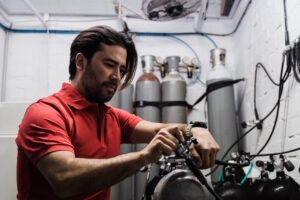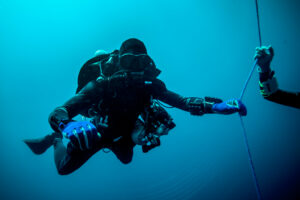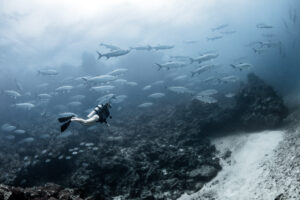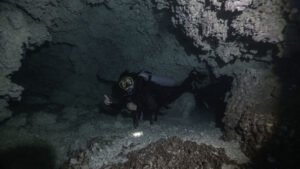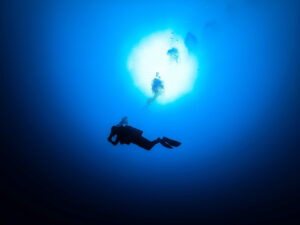What is a Backplate?
The backplate is an essential component of a diver’s equipment, providing a stable and secure platform for attaching the primary scuba cylinders and other essential gear. Typically made from metal, the backplate ensures that the weight of the equipment is evenly distributed across the diver’s back, enhancing comfort, stability, and balance underwater. This entry will explore the history, construction, materials, and various designs of backplates used in scuba diving, as well as their relationship with back inflation buoyancy compensators.
History
Scuba diving has evolved significantly since its inception in the early 20th century. Early divers used heavy and cumbersome equipment, making it challenging to maneuver and maintain buoyancy. The backplate was first introduced in the 1960s as a solution to these challenges, offering divers a streamlined and ergonomic way to carry their equipment. Over the years, the backplate has undergone numerous design improvements and refinements, adapting to the needs of divers and advancements in diving technology.
Construction
A backplate is a flat, rigid, and durable plate designed to rest against a diver’s back. It features multiple attachment points for securing the primary scuba cylinders, a buoyancy compensator, and other diving accessories. The plate is held to the diver’s body by a harness system, which usually consists of adjustable straps that pass over the shoulders and around the waist. These straps provide a secure and comfortable fit, ensuring that the backplate and the attached equipment stay in place throughout the dive.
Materials
Backplates are typically made from metal, with stainless steel and aluminum being the most common choices. Each material has its advantages and disadvantages, and the choice often depends on the diver’s preferences and the specific requirements of a dive.
Stainless steel backplates are heavier and more robust, providing excellent stability underwater. Their added weight can help counterbalance the buoyancy of a wetsuit or drysuit, reducing the need for additional weight systems. However, stainless steel backplates may not be suitable for long-duration or technical dives, as their weight can contribute to diver fatigue.
Aluminum backplates, on the other hand, are lighter and more corrosion-resistant, making them a popular choice for divers who prioritize weight reduction and ease of maintenance. While they offer less inherent stability than their stainless steel counterparts, their lighter weight can be advantageous for travel or for divers who require minimal additional weight.
Designs
There are several backplate designs available on the market, catering to various diving styles and preferences. The two most common designs are the single-tank and the double-tank backplates.
Single-tank backplates are designed for use with a single scuba cylinder. These backplates typically feature a central slot or a series of slots, which allow the diver to attach the cylinder directly to the backplate using a cam strap or a similar securing mechanism. This design provides a streamlined and efficient setup, particularly for recreational divers.
Double-tank backplates, as the name suggests, are designed to accommodate two scuba cylinders side by side. They often feature additional attachment points, bars, or brackets for securing the cylinders, as well as the option to mount various accessories such as stage bottles or decompression tanks. This design is particularly popular among technical divers who require additional gas supplies for longer or more demanding dives.
Back Inflation Buoyancy Compensator Integration
A backplate is often used in conjunction with a back inflation buoyancy compensator (BIBC), which is a type of buoyancy control device that relies on air bladders located behind the diver’s back to control buoyancy. The backplate provides a solid foundation for the BIBC, ensuring that the air bladders remain in the optimal position for efficient buoyancy control.
When used together, the backplate and the BIBC
form a backplate-and-wing system, a setup that offers several advantages over traditional buoyancy control devices. The positioning of the air bladders behind the diver reduces frontal clutter, enhancing streamlining and reducing drag underwater. The backplate’s rigidity helps maintain the BIBC’s shape even when fully inflated, promoting balanced buoyancy and preventing the ‘squeeze’ effect experienced with some other buoyancy compensators.
Moreover, the combination of a backplate and a BIBC allows for a greater range of movement and comfort. As the backplate spreads the weight of the equipment evenly across the diver’s back, it reduces the pressure points and discomfort associated with harness systems that lack a rigid structure. The backplate also provides additional lumbar support, which can be particularly beneficial on longer dives.
Customization and Accessories
The versatile design of the backplate allows for a high degree of customization. Divers can adjust the harness straps for a perfect fit, and there are multiple attachment points for accessories such as knife sheaths, torch holders, and D-rings for clipping on additional gear.
Backplates can also accommodate various padding options for increased comfort. Some divers choose to add a soft pad to the backplate to cushion the hard metal against their back, while others prefer the solid feel of the metal plate. Some backplates feature pre-drilled holes for attaching a crotch strap, which can enhance stability and prevent the gear from riding up on the diver.
In the dynamic world of scuba diving, the backplate stands as an embodiment of innovation and practical design. It is an indispensable tool that enhances a diver’s comfort, stability, and safety underwater. Whether made from stainless steel or aluminum, used with a single or double tank, or paired with a back inflation buoyancy compensator, the backplate’s primary function remains the same: to provide a robust and reliable platform for carrying essential diving equipment. Its enduring popularity among divers, both recreational and technical, is a testament to its effectiveness and versatility.
Key Takeaways
As scuba diving continues to evolve, it is likely that the backplate will adapt to meet the changing needs of divers and advancements in diving technology. New materials, designs, and innovations may be introduced to further improve the performance, comfort, and customization possibilities of the backplate system. Regardless of these potential developments, the backplate’s core function as a stable and secure platform for divers will remain an essential component of the diving experience. By providing a solid foundation for scuba equipment and facilitating efficient buoyancy control, the backplate has become an indispensable part of the underwater world, helping to ensure the safety and enjoyment of divers across the globe.

